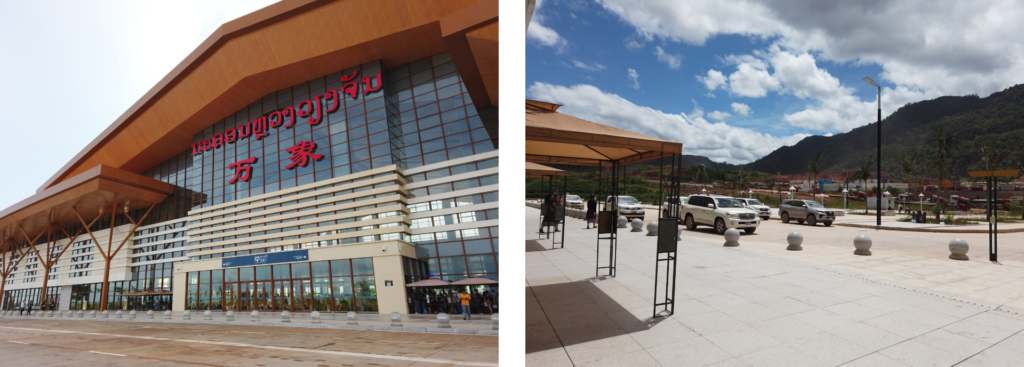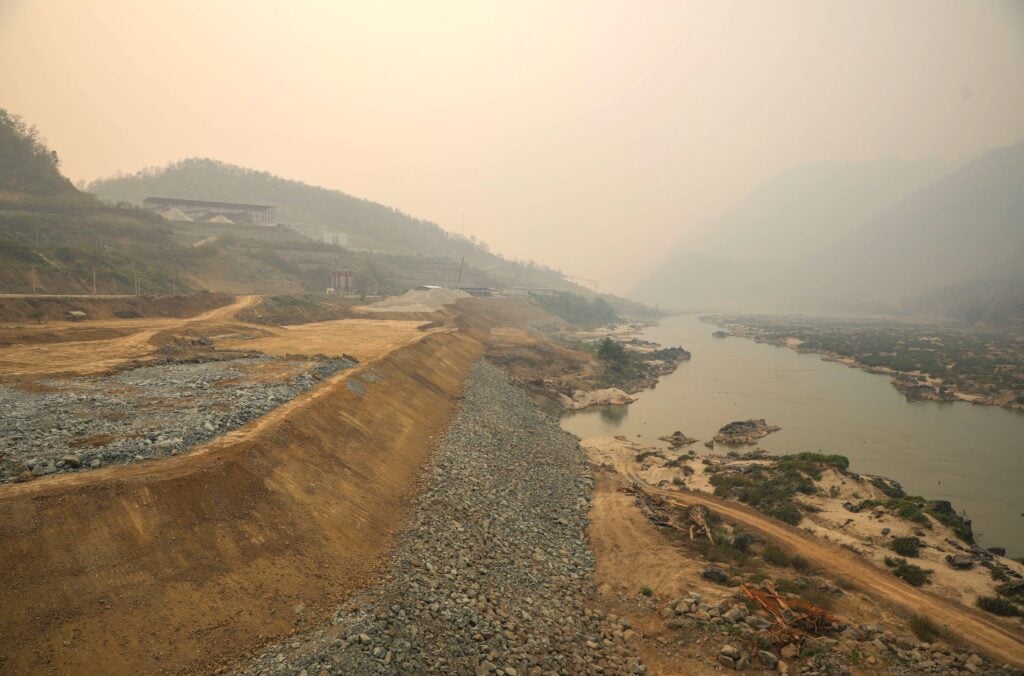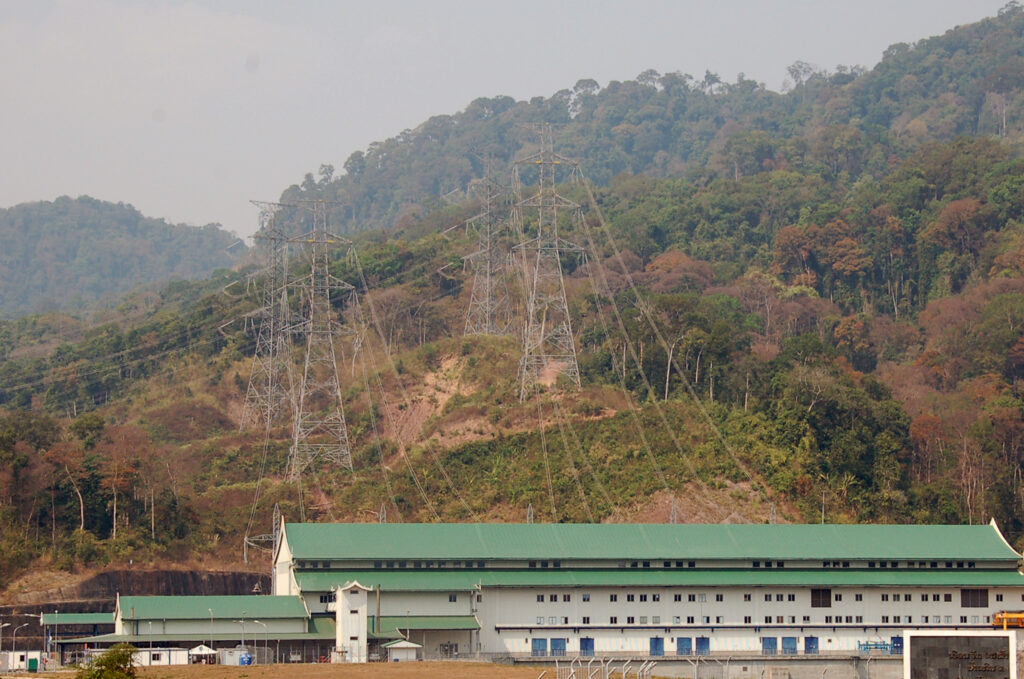BANGKOK, THAILAND – Infrastructure development in Laos has not only led to an increase in illegal logging and deforestation, it has also brought humans into contact with wildlife and increased the risk of another zoonotic spillover – which could lead to another pandemic.
However, there are ways to avoid this, and the development does not need to stop, experts said in a recent webinar.
By 2030, an estimated $US95 trillion will be invested worldwide in infrastructure development – from energy, transport and water to telecommunications – to maintain economic growth and to meet global demand for basic needs, according to a report from the World Wide Fund for Nature (WWF).

These upcoming investments will certainly provide economic and life opportunities for several million people. But there is also a downside – when development is not well-planned and does not integrate a holistic approach that considers the climatic, environmental and social risks.
Unfortunately, that is the case for the Lower Mekong region – Cambodia, Laos, Myanmar, Thailand and Vietnam – where many infrastructure developments have stirred controversy on the region’s path to sustainability.
Released in June, the WWF’s Mapping Pathway report highlighted the investment needed for infrastructure development in Southeast Asia by 2040 – including $605 billion for Vietnam, $494 billion for Thailand and $224 billion for Myanmar.
Laos has been in the spotlight due to its strategy of transforming from a land-locked to a ‘land-linked’ country. Integrated into China’s Belt and Road Initiative, Laos has accelerated the building of roads and railways to merge with global supply chains while increasing investment attraction.
Along with the China-Laos railway, which commercially launched operations in December 2021, more gigantic projects will be built, but will also likely impact some of the country’s remaining pristine forests.
This could lead to increasing deforestation, human exposure to wildlife and changes in people’s livelihoods if no measures are taken to mitigate the impacts – and if law enforcement is weakened.

“Even if it is possible to avoid complete forest conversion, the construction of new or the improvement of existing transport infrastructure in almost 100% of cases leads to forest degradation,” said Denis Smirnov, an independent environmental investigator who monitors Laos’ infrastructure projects.
“In countries with weak law enforcement, high levels of corruption and a lack of independent oversight by civil society, the worst-case scenario [of deforestation] is hard to avoid.”
Speaking at a recent webinar organized by the Internews’ Earth Journalism Network (EJN), Smirnov and two other speakers – a WWF infrastructure expert and a Reuters data journalist – showcased the impact of infrastructure development and what can be done to ensure sustainability.
Forest ‘cleansing’
In 2015, as part of a project in Laos, Smirnov analyzed the mechanisms of illegal logging alongside 17 infrastructure projects in southern Laos.
One of these was the construction of a 101-kilometer road in Sekong province, where the forests are rich with high-graded and valuable trees.
Satellite imagery analysis and field surveys revealed that logging had been done well beyond the areas of the road construction – some even 40 kilometers from the road.
The loggers only took the best quality trees and species protected by law, such as rosewood. Volumes and grades of harvested timber also exceeded the permitted logging quotas, identified through a pre-felling survey conducted by forestry officials before road construction started.
Reviewing the official documents, Smirnov found that logging permits were given in favor of loggers who could harvest the desired wood regardless of the location, timeframe and spatial borders – implying corrupt relations between the contractors and authorities.
Documents provided by Vietnam customs showed that the volume of Laos’ exported timber was threefold the country’s entire harvest quotas during the time of his investigation.

“Our findings from this case study and observations of other logging quotas allowed us to suggest that, in reality, obtaining permits for harvesting ‘conversion’ timber through the implementation of infrastructure projects became a way to legitimate large-scale, high-grading and selective logging in all categories of forests, including conservation and protection forests,” said Smirnov.
“There is reason to believe that the old practices of illegal logging under the guise of road construction and other infrastructure projects are returning to Laos. From local sources comes information about the large-scale transportation of logs from southern Laos to Vietnam.”
In parallel with forest degradation, wild animals in the forest were ‘cleansed’ by local hunters, who sold their prey in markets. Unfortunately, said Smirnov, this practice is not limited to roads, but also dam building and mining.
This practice has also been found in other countries, including Cambodia, where some wildlife sanctuaries and protected forests suffered from pervasive illegal logging and deforestation after road construction.
One of those cases was in the Snuol Wildlife Sanctuary, where the government dissolved the protected areas in 2018 and issued economic land concessions to private companies.
Spillover risk
Recently, Reuters released an investigative series called The Bat Lands, which focuses on how human activities – including intrastate development – affect the spread of zoonotic diseases and identifies the high-risk areas in different parts of the world, including Laos.
Collaborating with multiple scientists and veterinarians, a team of journalists led by Ryan McNeill, the deputy editor of the Reuters global data journalism team, built a dataset on spillovers between 2002 and 2020 in relation to covariance, including tree loss and land cover.
Then they used a machine learning model to examine conditions around the documented spillovers, enabling them to make predictions about where similar conditions exist elsewhere.
This also allowed them to identify a “jump zone,” or the riskiest areas that can be the potential starting points of future outbreaks, epidemics and pandemics.
Speaking during the EJN webinar, McNeill said the jump zones in Laos had increased from 31% of its terrain to 73% between 2002 and 2020 – the largest increase of any country.
This is partly due to the loss of forests driven by the massive growth of rubber plantations, other agriculture, mining and infrastructure that brings humans and wildlife into contact.
The Reuters report showed that the China-Laos Railway, extending 422 kilometers from Laos’ northern border to the capital Vientiane, cuts through rich rainforest and comes close to nearly 40% of bat habitats – increasing the potential of a spillover.
Through a cement company document filed with the government, the team of journalists was able to pinpoint the sources of limestone used for building railways and highways, including from bats’ preferred habitat in karsts. They also found a new city and train stations had been built amid the lush jungle.

“What Laos represents is a lack of understanding about the risks involved,” said McNeill.
“We were trying to show that there are risks inherent in this development, and that lead into the solution side of it … Scientists say development doesn’t have to stop. It’s about understating those risks and trying to mitigate them.”
Reuters produced a solution piece that suggested ways to avoid the spillover risks, including mandating environmental and health risk assessments before allowing the projects. Biological impacts should also be addressed.
Rethink planning
“All of these [points are] phenomenal where we are not incorporating truly social and environmental parameters that make infrastructure sustainable, durable and workable for local communities,” said Urvana Menon, a climate resilient specialist and a technical lead for liner infrastructure in USAID Mekong for the Future.
Citing a 2017 study on 200 conflict-affected infrastructure projects in Latin America and the Caribbean, she said more than 80% of the projects were delayed, 20% canceled and more than half were over budget. Only 20% were unaffected by social and environmental factors.
Similar trends were observed in other parts of the world.
Menon emphasized that more than 75% of the infrastructure to be built by 2050 does not yet exist today. If those projects happen, they will double the total infrastructure on earth compared with 2012.
New projects will surge in the next few years as infrastructure is looked at as a “magic wand” to help economies recover from the Covid-19 pandemic.
“We need to rethink planning. There is no doubt about it. If we don’t rethink planning today, we are going to end up in a situation where we will probably build infrastructure and that will aggregate climate disasters,” she said.

Leading the production of the WWF’s Mapping Pathway report, Menon pointed out that the current development processes follow the steps of setting a goal, designing a project, securing funding and getting approval.
The impact assessment comes last, increasing the resources needed to ensure sustainability, while innovation can’t come in because the design is done earlier, making the process almost like retrofitting.
She suggested the developments move from approval-based thinking to a pre-planning thinking process, in which the incorporation of social and environmental safeguards, climate resilience, and durability of infrastructure have to come even before defining the goal.
The process needs to consider the natural capital where infrastructure is planned because it makes developments more effective for the people. For example, keeping coastal vegetation to protect roads from storms or conserving upstream forests to reduce erosion onto the roads.
“The goal has to change. The goal can’t really be about making a road, winning votes and ensuring that I win the next election,” said Menon.
“The goal has to be about ensuring from the start. When I start planning for my country, for my state, for my city, I’m going to ensure that climate resilience, that environmental sustainability, that sustainable development goals are all incorporated.”
This story was produced from a webinar called ‘Our Mekong, Our Say: Must the Environment Be Sacrificed for Infrastructure Development?, organized by the Internews’ Earth Journalism Network on August 24, 2023. Watch the webinar here.








